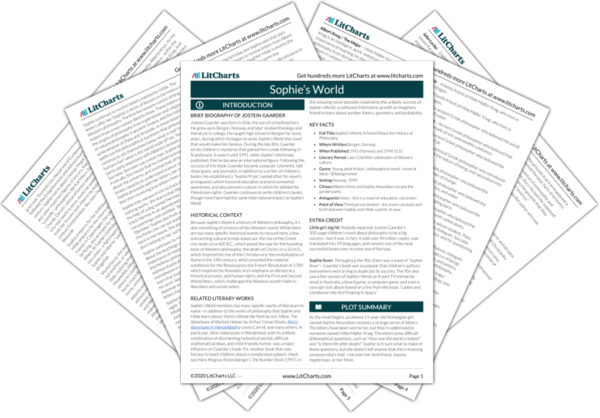In the novel-within-the-novel, Sophie Amundsen discovers a strange brass mirror that allows her to see her “real-life” counterpart, Hilde Møller Knag. It’s interesting that in Sophie’s World the mirror, a traditional symbol of self-contemplation, is depicted as a tool for interpersonal communication—a magical device that allows Sophie to see another part of the world. The message would seem to be that introspection and careful thinking, the qualities that Sophie’s philosophical education encourages, don’t just lead to a better understanding of oneself, but also to a better understanding of the world and other people.
The Brass Mirror Quotes in Sophie’s World
“Who are you?” Sophie asked.
She received no response to this either, but felt a momentary confusion as to whether it was she or her reflection who had asked the question.
Sophie pressed her index finger to the nose in the mirror and said, “You are me.”
As she got no answer to this, she turned the sentence around and said, “I am you.”















